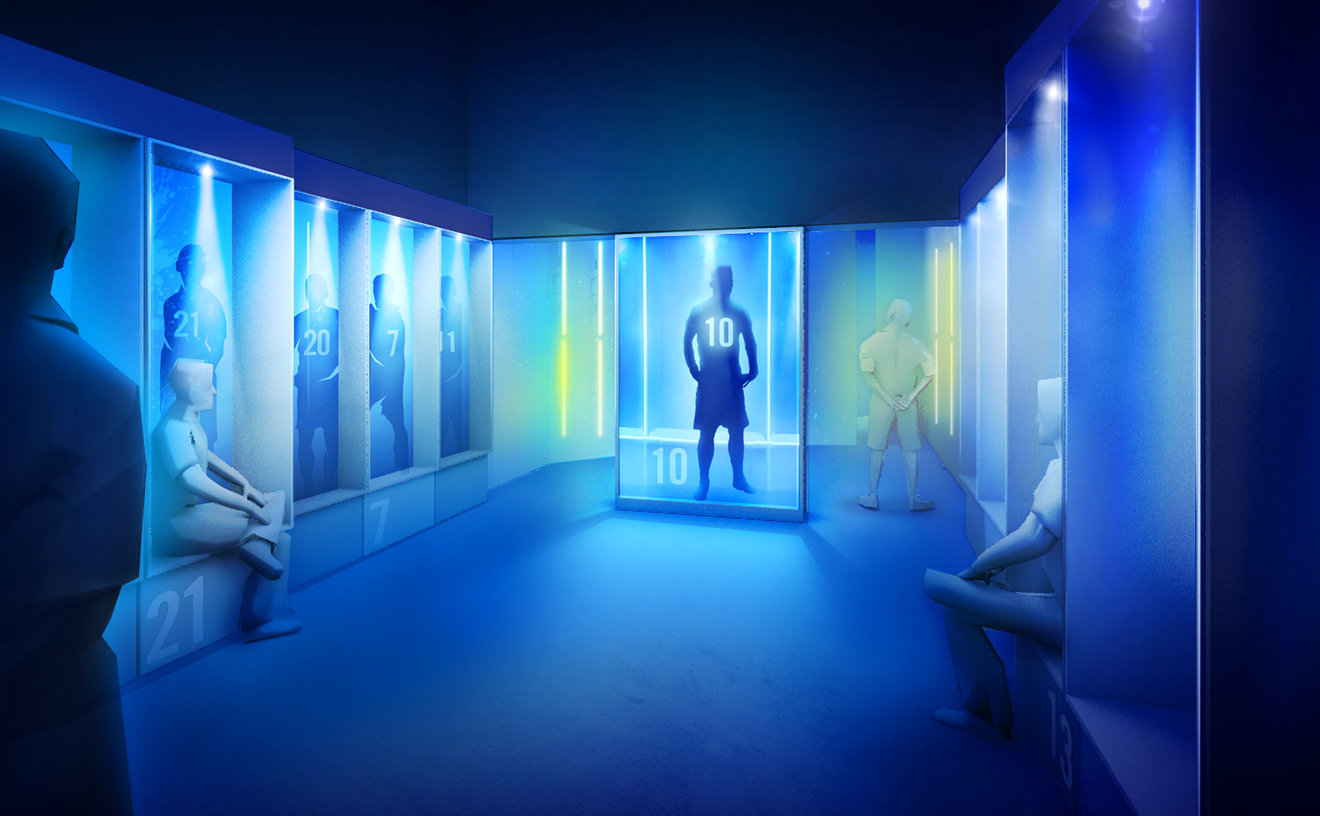"Human Rites"
Through October 3 at the Bass Museum of Art, 2121 Park Ave., Miami Beach; 305-673-7530; bassmusem.org. Wednesday through Sunday 10 a.m. to 5 p.m.
What does a baroque altarpiece depicting the Virgin Mary and baby Jesus have to do with a pair of incandescent pink and purple ghetto-fabulous sneakers? The answer is a fresh way of presenting historical and contemporary artworks side by side to pique interest and get people talking. Titled "Human Rites," the exhibit showcases works that reflect both the subconscious and premeditated need for rituals in everyday life. It's aimed at understanding the timelessness of ritual, expressed historically and anthropologically in religious as well as other contexts. The exhibit features everything from 15th- and 16th-century devotional altarpieces and statues to provocative works by top-drawer contemporary names. Subodh Gupta's arresting aluminum and bronze sculpture appears at first like a giant hand grenade. A closer look reveals it resembles a rope-secured duffel bag perched on a luggage cart. Titled Dubai to Mumbai, the sculpture represents a common sight at airports in Islamic cities where the devout undertake the Haj in transit to Mecca. It brings to mind the devastating 2008 Mumbai terrorist attacks. Ai Weiwei's Forever Bicycles approximates a mammoth Tibetan prayer wheel. Constructed from 72 bicycles arranged in a circle and soaring heavenward in the center of a gallery, the totemic opus catches the dappled sunlight filtering in through a skylight and looks like it would be more at home in the center ring of a traveling circus.
"New Work Miami 2010"
Through October 17. Miami Art Museum, 101 W. Flagler St., Miami; 305-375-3000; miamiartmuseum.org. Tuesday through Friday 10 a.m. to 5 p.m., Saturday and Sunday noon to 5 p.m.
From shrimp sizzling in a skillet, to a walk-in kaleidoscope, to a bridge created from crushed cockroaches, this sprawling exhibit at MAM offers a wildly engaging snapshot of the creative forces shaping our city. "New Work Miami 2010" boasts 35 local artists and offers a stunning array of media — painting, sculpture, drawing, photography, video, environmental installation, performance, sound and fiber pieces — plus an ambitious lineup of performances, events, and screenings that will be presented concurrently during the show's run. Miami's multiculti undertow, the uncertainty spun by budding optimism amid the economic downturn, the creeping changes across our urban landscape, and the frenetic energy powering the city's cultural dynamism are all part of the Ariadne's thread thematically weaving the exhibition. "More than ever, the key to participating in global cultural conversations is to speak from within one's local conditions," says Rene Morales, MAM associate curator and co-organizer of the exhibit. Bouncing from one work on display to the next, you almost become intoxicated by the hothouse miasma of ingenuity creeping throughout the space like a tangle of wild vines overtaking a building.
"Spiritual Healing: Shamans of the Northwest Coast"
Through October 3 at Frost Art Museum, 10975 SW 17th St., Miami; 305-348-2890; thefrost.fiu.edu. Tuesday through Saturday 10 a.m. to 5 p.m. and Sunday noon to 5 p.m.
Way back before the advent of HMOs and over-the-counter cure-alls, the native peoples of Alaska, British Columbia, and the Yukon Territory typically sought the services of a shaman when they needed to treat a toothache, infection, or bad case of indigestion. The tribal shaman was considered a messenger between the human and spirit worlds and performed a variety of functions including healing. By helping alleviate spiritual traumas, shamans were thought to restore balance to the physical body and eliminate the source of sickness. That is until Europeans brought smallpox and other diseases that defied the traditional healer's powers and relegated the shaman's role to history. "Spiritual Healing: Shamans of the Northwest," an intriguing show at the Frost Art Museum, lifts the veil on the ritual practices of animistic tribes such as the Tlingit, Tsimshian, and Haida, all of which believed nature is endowed with spirits that manifest in the form of illness and disease. The exhibit features an enchanting array of historic tools shamans used to enter a trance, communicate with the spirit world, and cure their patients, along with more contemporary objects displayed together as works of art, such as amulets, rattles, masks, drums, crowns, necklaces, and clan poles.
Egyptian Gallery
Ongoing at the Bass Museum of Art, 2121 Park Ave., Miami Beach; 305-673-7530; bassmuseum.org. Wednesday through Sunday noon to 5 p.m.
When the ancient working stiff was preparing for his journey into the afterlife, little did he know he would spend decades gathering dust in a musty Wynwood warehouse. But that's exactly where the Egyptian craftsman dating back to the 25th or 26th Dynasty (808-518 B.C.) was found inside a polychrome wood inner sarcophagus. The liberated mummy is on view as part of the newly inaugurated Egyptian Gallery at the Bass, which also features a modest collection of rare artifacts in the permanent display that marks the only space of its kind in Florida. The exhibit also showcases the Bass mummy's outer sarcophagus, a child's sarcophagus, and several stellar examples of Egyptian statuary, canopic jars, stela fragments, and pottery. Unfortunately, some bling-craving pharaohphiles or Tut freaks might leave the Bass feeling a bit E-gypped after experiencing the modest exhibit. Don't expect sensational gold-covered coffins or regal masks of the ancient kings and queens of Egypt. Instead, these are the types of artifacts that continue inspiring the inner Indiana Jones or armchair archaeologist in most of us and have always fueled curiosity about an enigmatic lost culture. It's well worth a visit.










